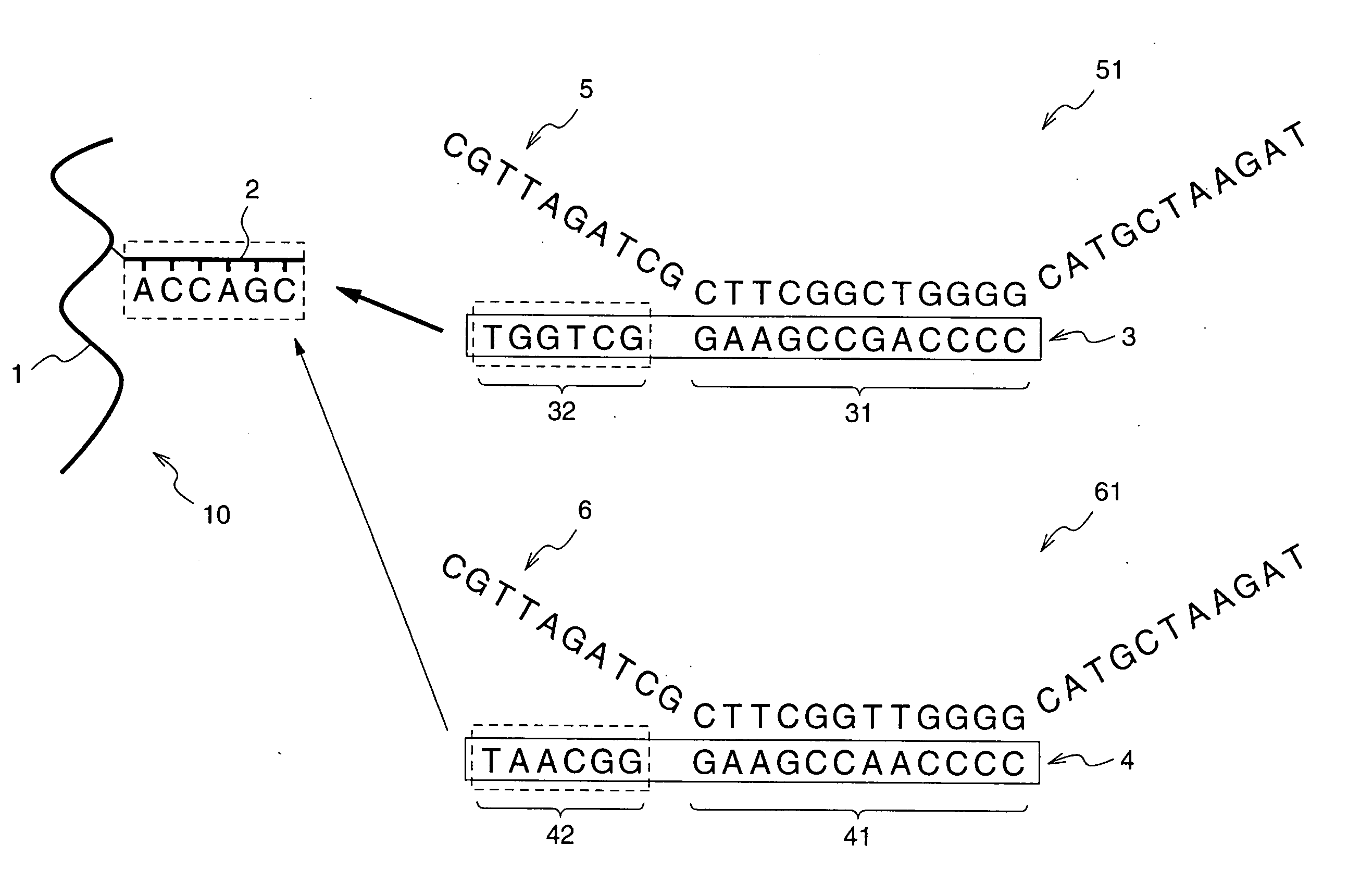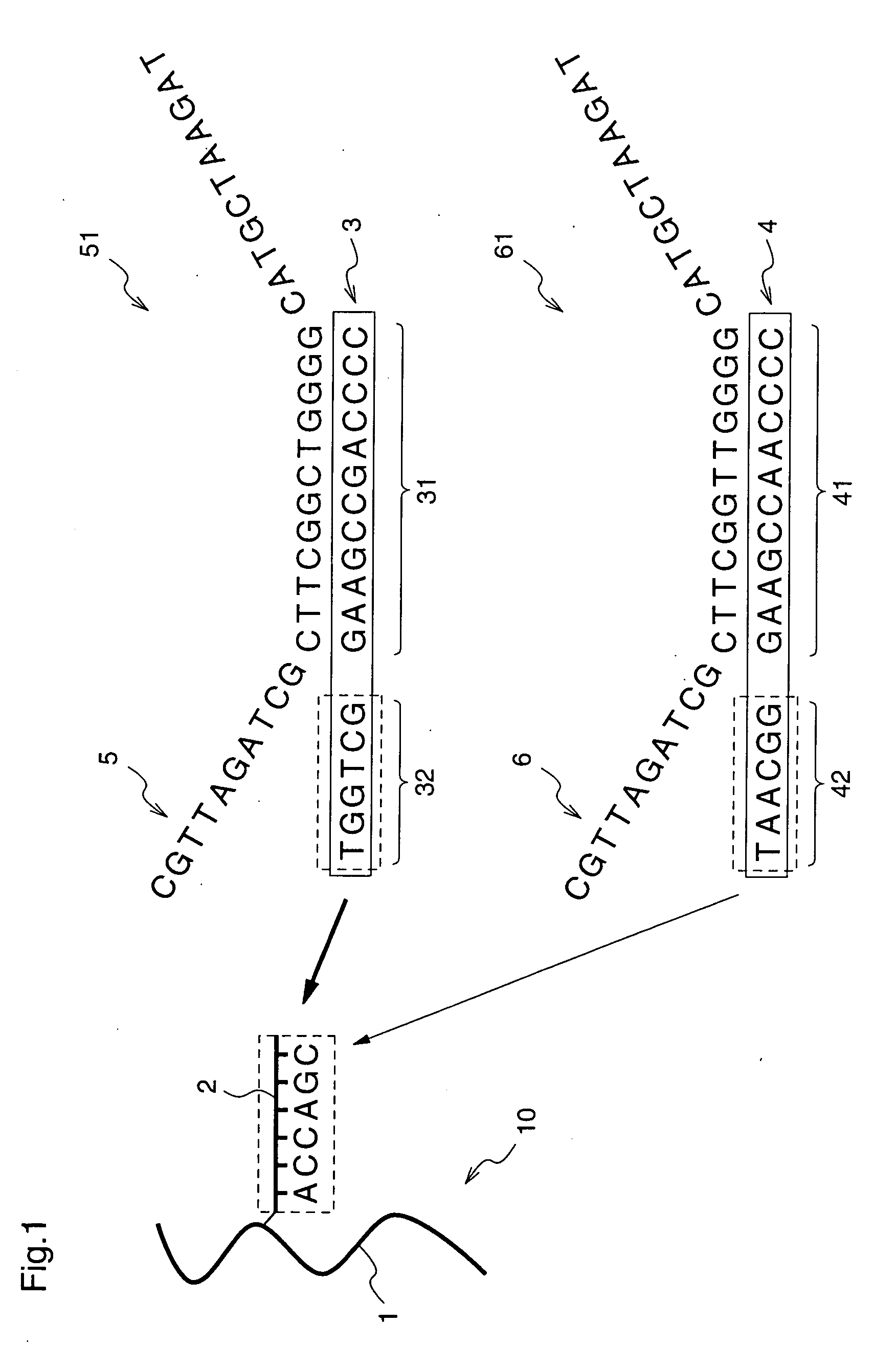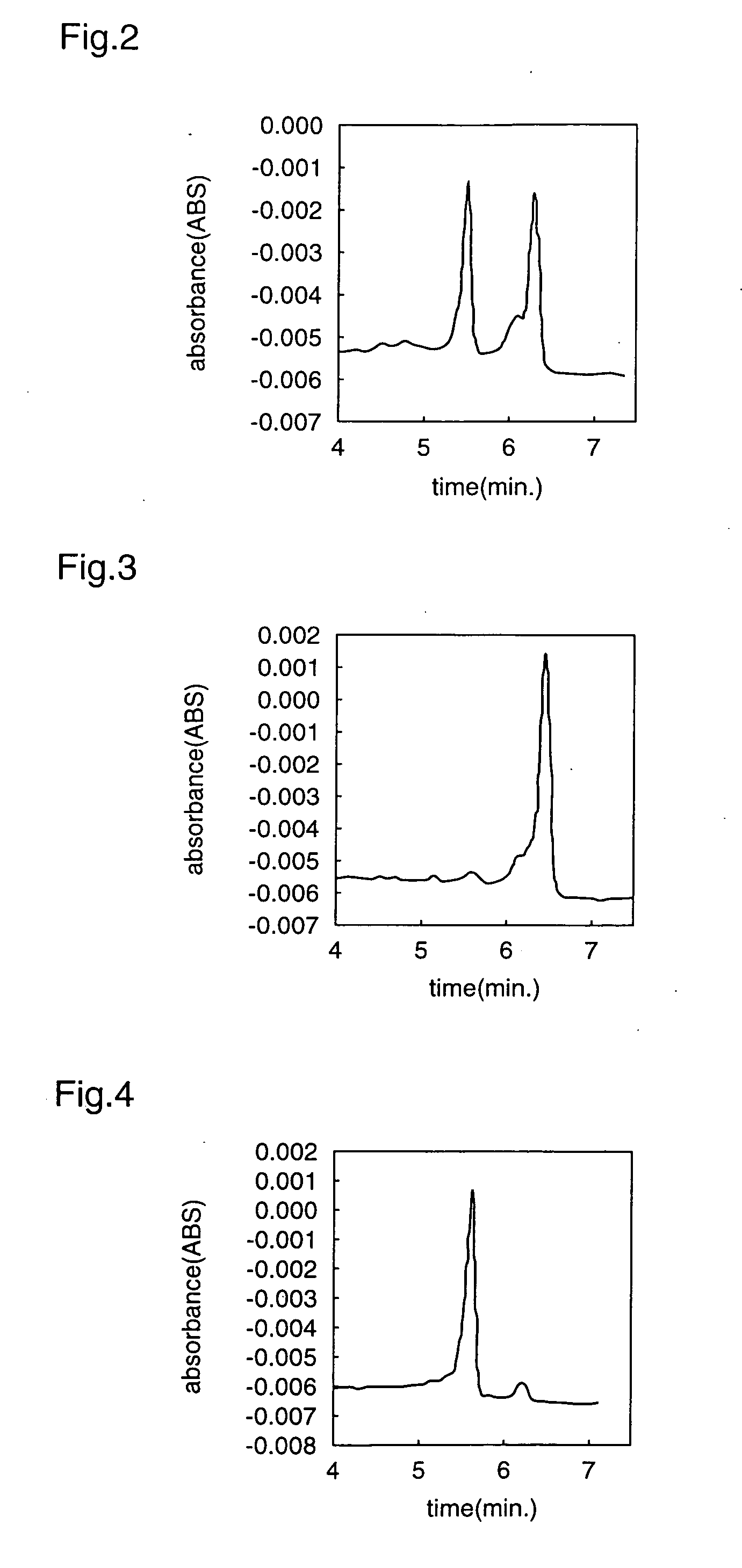DNA separation device, DNA separation method, and ligand DNA
a separation device and ligand technology, applied in the direction of isotope separation, diaphragm, electrolysis, etc., can solve the problems of inability to minutely control the bonding force between the sample dna b>200/b> and the marker dna b>212/b>, and require an immense amount of labor and time to estimate various, so as to achieve the effect of short tim
- Summary
- Abstract
- Description
- Claims
- Application Information
AI Technical Summary
Benefits of technology
Problems solved by technology
Method used
Image
Examples
embodiment 1
[0063] In a first embodiment of the present invention, a first ligand DNA that can be bonded to both a first sample DNA and a conjugate DNA, and a second ligand DNA that can be bonded to both a second sample DNA and the conjugate DNA are bonded to the first sample DNA and the second sample DNA to create a first DNA complex and a second DNA complex, respectively, and thereafter, the first and second DNA complexes are made to perform electrophoresis in the conjugate DNA to separate these DNA complexes.
[0064] Hereinafter, a description will be given of the constructions of the conjugate DNA and the ligand DNAs according to the first embodiment.
[0065]FIG. 1 is a diagram illustrating the correlations among the conjugate DNA, the two sample DNAs included in a sample solution, and the two ligand DNAs, according to the first embodiment.
[0066] Initially, the conjugate DNA 10 according to the first embodiment is formed by bonding a non-electrophoresis material 1 and a marker DNA 2 as in th...
PUM
| Property | Measurement | Unit |
|---|---|---|
| length | aaaaa | aaaaa |
| inner diameter | aaaaa | aaaaa |
| length | aaaaa | aaaaa |
Abstract
Description
Claims
Application Information
 Login to View More
Login to View More - R&D
- Intellectual Property
- Life Sciences
- Materials
- Tech Scout
- Unparalleled Data Quality
- Higher Quality Content
- 60% Fewer Hallucinations
Browse by: Latest US Patents, China's latest patents, Technical Efficacy Thesaurus, Application Domain, Technology Topic, Popular Technical Reports.
© 2025 PatSnap. All rights reserved.Legal|Privacy policy|Modern Slavery Act Transparency Statement|Sitemap|About US| Contact US: help@patsnap.com



